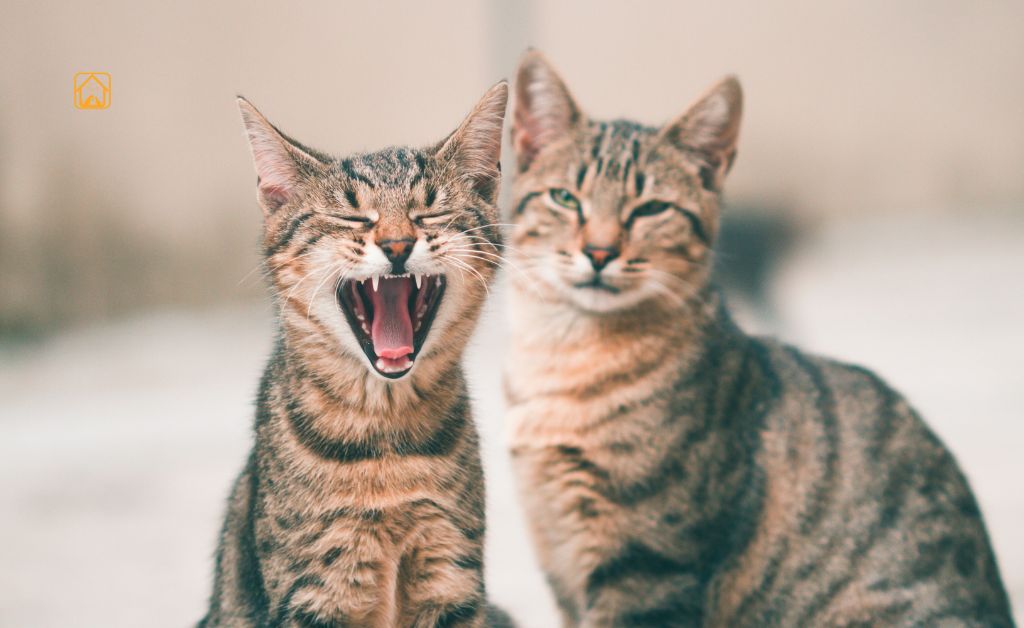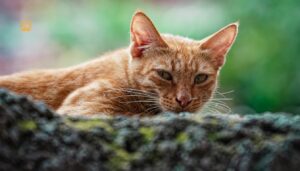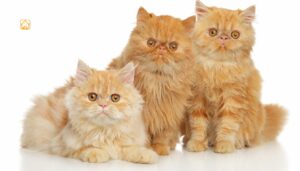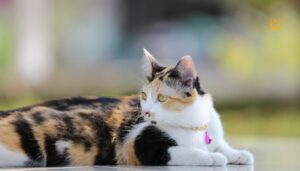What Are Hybrid Cats? Origins and History
Hybrid cats are the result of crossing a domestic cat with a wild feline species, such as the Asian leopard cat or African serval. The idea began gaining traction in the 1960s, partly as a way to preserve wild cats by creating a domestic alternative with similar beauty. The Bengal cat is perhaps the most famous pioneer, started by breeding Asian leopard cats with domestic shorthairs, largely thanks to breeder Jean Mill’s efforts.
Other hybrids, like the Savannah cat, were developed by crossing serval with house cats. Breeders hoped to create pets that boasted wild looks but could comfortably share our homes. Over time, more breeds emerged, some involving further domestic cat pairings to refine temperament and appearance. Today, popular hybrid cats include not just Bengals and Savannahs but also Chausies, Serengetis, Cheetohs, Toygers, and Pixiebobs, each with their own origin stories and fascinating quirks.
Key Differences: Hybrid Cats vs. Domestic Cats
Ever wondered what makes hybrid cats so different from your average house cat? The first thing you’ll notice is their looks—many hybrids have bold markings like rosettes, large spots, or stripes that give them a wild appearance. They often have bigger ears, leaner, more muscular bodies, and a confident walk that turns heads.
But it’s not just about looks. Hybrid cats, especially those from early generations like Bengals or Savannahs, often hold onto traits from their wild ancestors. That can mean high energy, strong curiosity, and sometimes a cautious attitude toward strangers. They’re not shy about exploring, climbing, or even playing in water.
Many hybrid cats need more mental and physical stimulation than regular breeds. Think puzzle toys, interactive games, and plenty of space to roam. You might find your Bengal playing fetch or your Savannah leaping onto the fridge! Honestly, every hybrid is a bit of a wild card, so expect the unexpected.
The Most Popular Hybrid Cat Breeds
Bengal Cats
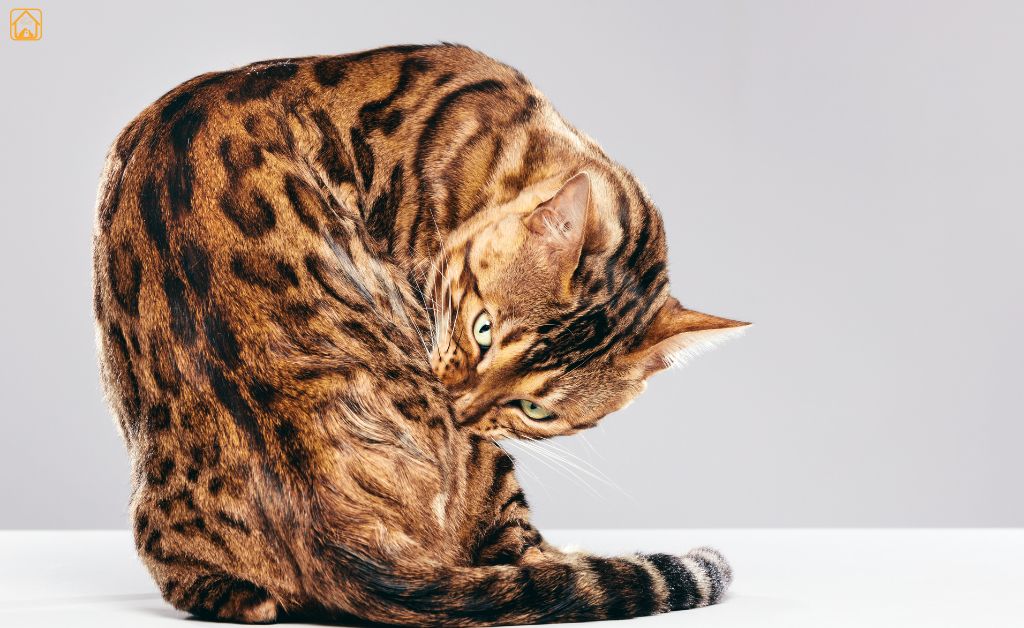
Bengal cats are famous for their wild beauty and playful nature. Bred from Asian leopard cats and domestic breeds like Egyptian Maus, they’re bold, curious, and full of energy. Their short, shimmering coats feature striking spots or marbled patterns, often in brown, silver, or snow shades. Bengals love to climb, play, and even splash in water. They’re highly intelligent and very vocal—expect full conversations! These cats thrive in active homes and need daily mental and physical stimulation.
- Size: 13–16 inches tall; 8–15 pounds
- Coat: Short, silky, glittered; spotted or marble
- Temperament: Energetic, smart, affectionate, mischievous
- Care: Needs puzzle toys, climbing shelves, and daily interaction; high-protein diet; watch for heart and eye issues
My friend’s Bengal Cat loves stealing socks from the laundry and hiding them, pure playful chaos in fur form.
Savannah Cat
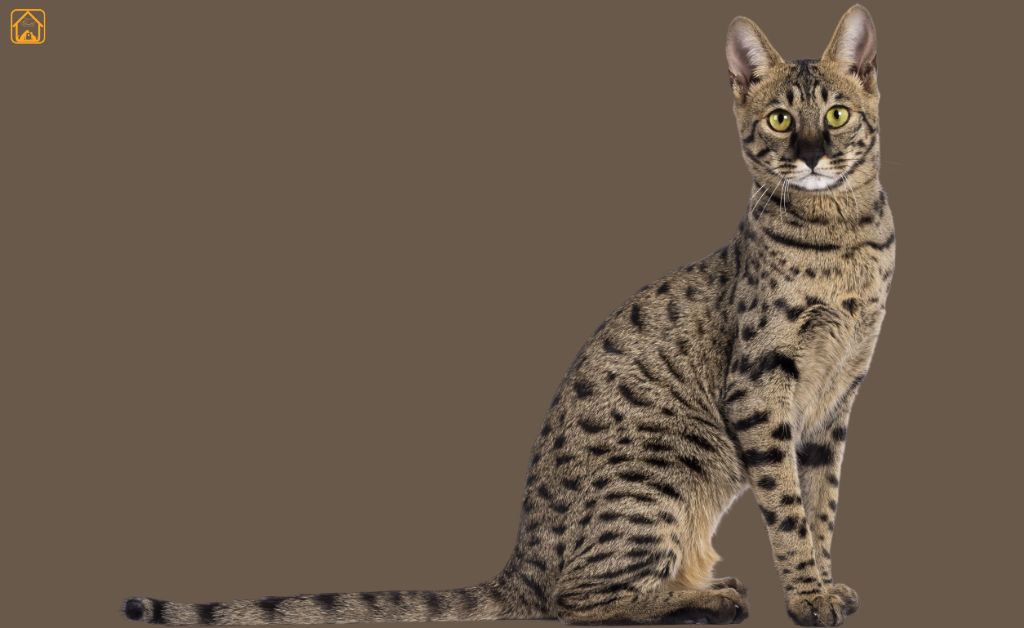
The Savannah cat is like having a mini wildcat in your home. Bred from African servals and domestic cats, they’re tall, muscular, and covered in bold spots. These hybrids are full of energy and love being involved in everything. Savannahs form strong bonds with their humans and often act more like dogs—playing fetch, walking on a leash, and greeting you at the door.
- Size: 14–17 inches tall; 12–25+ pounds
- Coat: Short, dense, boldly spotted (gold, brown, or silver)
- Temperament: Intelligent, loyal, adventurous, high-energy
- Care: Needs space, daily stimulation, climbing shelves, and a high-protein diet; check for legal restrictions in your area
One Savannah I met learned to open cabinets and steal snacks—smart, sneaky, and endlessly entertaining. But they need structure, or their energy can quickly become chaos.
Chausie
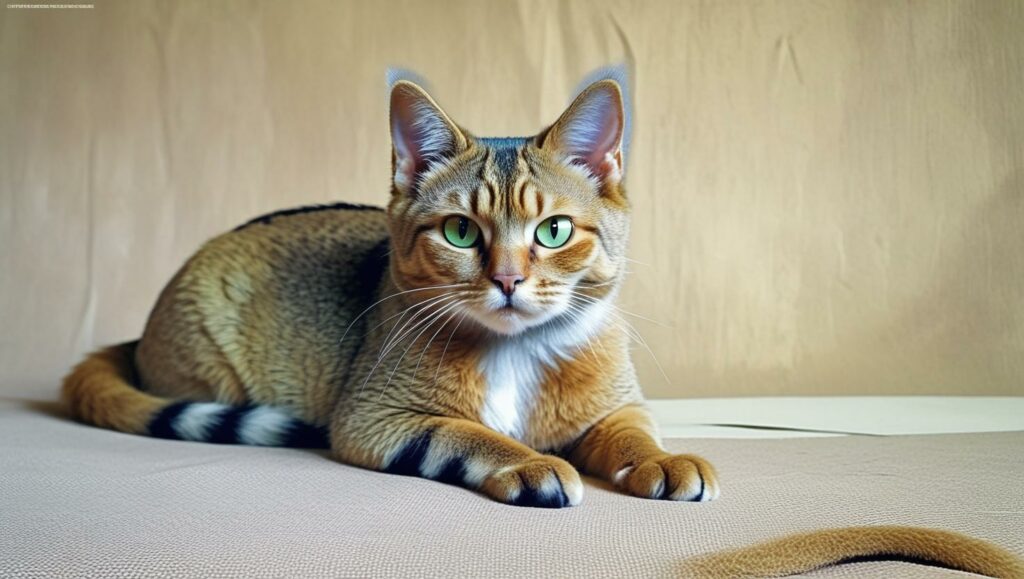
Chausies are the result of crossing domestic cats (often Abyssinian or Oriental Shorthair) with jungle cats. They’re sleek, muscular, and built for adventure. Chausies are social, love playing with other pets, and often form deep bonds with their people. Their wild ancestry can make them energetic and sometimes a bit unpredictable.
- Size: 14–18 inches tall; 8–16 pounds
- Coat: Short, usually solid black, grizzled tabby, or ticked tabby
- Temperament: Intelligent, active, social
- Care: Require lots of exercise and stimulation; may need a grain-free diet due to inherited digestive quirks
One Chausie I met would “hunt” toy mice for hours, then curl up next to me, purring like a freight train. They’re wild at play, but loving when it matters.
Serengeti
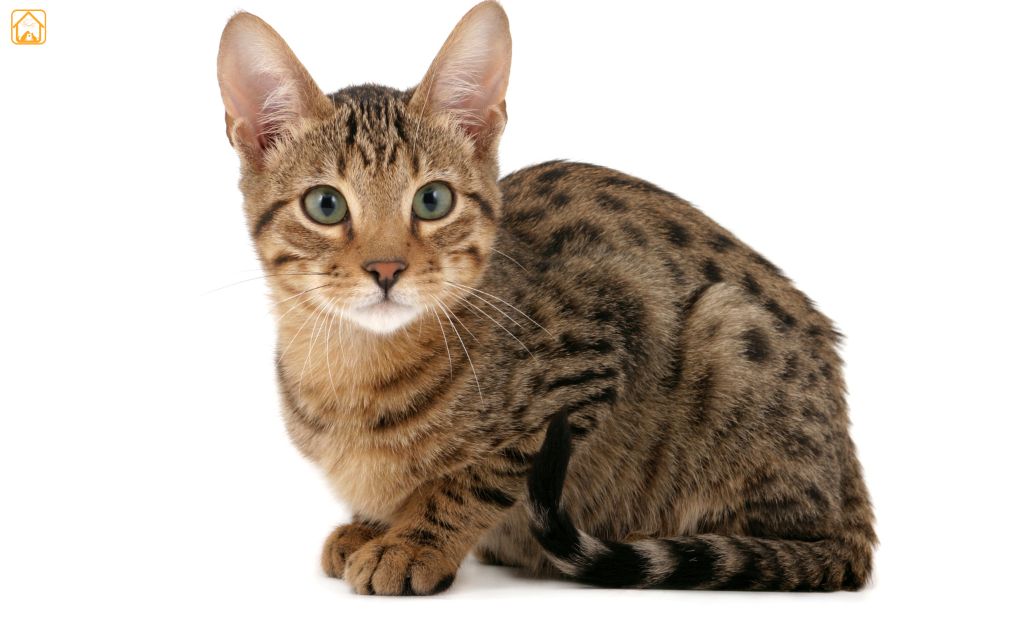
The Serengeti is a hybrid between the Bengal and Oriental Shorthair, designed to look like a serval without wildcat genes. Serengetis are agile, vocal, and love to climb. They’re smaller than Bengals but pack a big personality.
- Size: 10–16 inches tall; 8–15 pounds
- Coat: Spotted, various colors
- Temperament: Vocal, playful, intelligent
- Care: Need daily play and vertical space; thrive in interactive households
Ever heard a Serengeti “sing”? They’ll tell you exactly what’s on their mind, loudly and often!
Cheetoh
Cheetoh cats are a newer hybrid, created from Bengals and Ocicats. The goal was a cat with wild looks but a gentle, friendly temperament. Cheetohs are large, affectionate, and love attention. They’re great with kids and other pets, making them a rising star among hybrid cat breeds.
- Size: 12–18 inches tall; 12–25 pounds
- Coat: Short, plush, with bold spots
- Temperament: Friendly, vocal, outgoing
- Care: Need lots of play; enjoy puzzles and interactive toys
Honestly, the first time I met a Cheetoh, I thought, “This is a dog in a cheetah costume.” They’re friendly and eager to please.
Toyger
Toygers are designed to look like tiny tigers, thanks to striking stripes and a muscular build. They’re the product of Bengal and domestic tabby crosses. Toygers are playful, affectionate, and surprisingly easy to train, some will even play fetch!
- Size: 9–13 inches tall; 7–15 pounds
- Coat: Short, orange with bold black stripes
- Temperament: Playful, trainable, sociable
- Care: Need regular enrichment; respond well to training and games
If you want a “mini tiger” who loves attention, the Toyger is a top pick. A Toyger once sat on my keyboard until I gave in and played his favorite game. They know how to get what they want!
Pixiebob
Pixiebobs look like tiny bobcats but are all domestic at heart. Bred to have short, bobbed tails and tufted ears, these cats are sturdy, easygoing, and often polydactyl (with extra toes!). They tend to “chirp” rather than meow and love water. Pixiebobs are known for being dog-like, following their humans everywhere.
- Size: 9–13 inches tall; 8–17 pounds
- Coat: Short or long, brown or red with spots
- Temperament: Easygoing, affectionate, active
- Care: Adapt well to families; enjoy interactive play
One Pixiebob I knew would “help” with household chores, always underfoot, always curious. If you like a constant companion, this breed is for you.
Breed Comparisons: Personality, Size, Lifespan, and Activity Level
Choosing the right cat breed means understanding more than just looks. Here’s a quick comparison of key traits like personality, size, lifespan, and energy levels to help you decide between popular feline favorites.
| Breed | Personality | Size | Lifespan | Activity Level |
| Bengal | Playful, energetic, social | 8–15 lbs, 13–16 in | 9–15 yrs | High |
| Savannah | Intelligent, loyal, adventurous | 12–24 lbs, 14–17 in | 12–20 yrs | Very high |
| Chausie | Social, active, curious | 8–16 lbs, 14–18 in | 12–14 yrs | High |
| Serengeti | Vocal, agile, intelligent | 8–15 lbs, 10–16 in | 8–12 yrs | High |
| Cheetoh | Affectionate, playful | 12–25 lbs, 12–18 in | 10–15 yrs | High |
| Toyger | Friendly, trainable | 7–15 lbs, 9–13 in | 10–15 yrs | High |
| Pixiebob | Chill, loyal, sociable | 8–17 lbs, 9–13 in | 13–15 yrs | High |
Ever met a cat that fetches toys or splashes in the tub? That’s not rare with these breeds. And while many hybrids are big and bold, Pixiebobs can surprise you with their gentle nature. Each breed brings its own flavor, so think about what fits your lifestyle before falling for a wild coat!
Hybrid Cat Care: Feeding, Grooming, and Enrichment Needs
Caring for hybrid cats like Bengals, Chausies, and Savannahs takes a little extra effort. These cats have wild roots, which means their needs go beyond the basics. When it comes to food, most hybrids thrive on a high-protein, grain-free diet. Some even have sensitive stomachs or trouble digesting common ingredients, so it’s important to choose quality food that supports their energy and health. Fresh, clean water should always be available, and regular vet visits help catch potential issues like heart or digestive conditions early.
Grooming is usually manageable as most hybrids have short, dense coats that only need brushing once or twice a week. But the real work is in keeping them mentally and physically active. These cats are full of energy and curiosity. Without daily play and stimulation, they can get bored fast, and boredom often leads to destructive behavior.
Interactive toys, climbing towers, shelves, and even leash walks can help burn off that wild energy. Think of them as feline athletes they need a routine that includes play, exploration, and bonding time. Meeting their enrichment needs keeps them happy, healthy, and less likely to turn your home into a jungle gym.
Common Health Issues in Hybrid Cat Breeds
Like all purebred cats, hybrids have some health risks. Bengals may be prone to heart conditions like hypertrophic cardiomyopathy and eye issues such as progressive retinal atrophy. Chausies often have digestive sensitivities, and Toygers can be susceptible to heart disease. Parasites, allergies, and infectious diseases can also crop up, especially in early-generation hybrids.
Regular checkups, a proper diet, and early detection go a long way. Not all hybrids will have health issues, but it’s wise to know what to watch for. Below is the table for your quick reference.
| Hybrid Cat Breed | Common Health Issues | Feeding Requirements |
| Bengal Cat | Heart disease, eye conditions | High-protein, low-carb, wet or raw preferred |
| Savannah Cat | Digestive sensitivities, stress | Grain-free, high protein, sensitive digestion formulas |
| Chausie | Short intestine, allergies | Strictly grain-free, hypoallergenic diets |
| Cheetoh & Toyger | Heart and kidney issues | Protein-rich, balanced, minimal fillers |
| Pixiebob | Hip dysplasia, polydactylism | Standard high-quality cat diet, watch weight |
Legal Restrictions and Adoption Considerations
Now, let’s talk about the legal restrictions on Hybrid cats. Some places have strict laws about owning hybrids, especially early-generation Bengals and Savannahs. Why? Because cats with close wild ancestry can be unpredictable and, in rare cases, a risk to the community or environment.
For example, some US states and cities ban or restrict owning Savannahs or Bengals that are less than four generations removed from their wild ancestors (often labeled as F1–F4). Early generations can be more challenging, both in temperament and in legal status. It’s the same in parts of the UK, Australia, and Europe. Always check your local government or animal control website before adopting or buying a hybrid cat.
Adopting a hybrid cat is a bit different than picking out a regular domestic shorthair at the shelter. Here’s what I’ve learned, and what most experienced hybrid parents recommend:
- Research your laws: Look up regulations in your area. Some localities require permits, registration, or even ban certain breeds outright. The Humane Society is a great starting point.
- Adopt, don’t shop: While hybrid cat breeders exist, many hybrids end up in rescues because owners weren’t prepared for their needs. Check breed-specific rescues or local shelters.
- Ask questions: Whether you’re adopting or buying, ask for health records, temperament testing, and proof of legal status (especially for early-generation cats).
- Meet the cat first: Spend time with your future cat before committing. Early-gen hybrids are not always a good match for first-time owners or homes with small children.
- Prepare your home: Hybrid cats need vertical space, secure windows, and lots of enrichment. If you rent, check your lease for pet restrictions.
Hybrid cats are amazing, but they’re not for everyone. Know the law, understand their needs, and adopt responsibly.
FAQs About Popular Hybrid Cats
Are hybrid cats good family pets?
Many are, especially later-generation Bengals, Toygers, and Pixiebobs. However, they usually suit experienced owners and families with older children. Early generations may be too active or unpredictable for young kids.
How big do popular hybrid cats get?
Savannahs can reach 24 pounds and up to 17 inches tall. Bengals, Cheetohs, and Chausies are typically 8–16 pounds. Size varies by breed and generation.
Do hybrid cats have special dietary needs?
Yes, many need high-quality, protein-rich diets, sometimes grain-free. Some hybrids, like Chausies, struggle with digesting grains or certain fillers. Consult your vet for the best nutrition plan.
Are hybrid cats legal everywhere?
No, laws differ widely. Some states, cities, or countries restrict or ban certain hybrid breeds, especially first or second generation Savannahs and Bengals. Always check local regulations before adopting.
What are common hybrid cat health issues?
Potential health concerns include heart disease (hypertrophic cardiomyopathy), digestive problems, eye disorders, and increased risk of some infections. Regular vet visits help catch issues early.
Can I adopt a hybrid cat from a shelter?
Absolutely! Some hybrid cats end up in rescues or shelters. Check with breed-specific rescues or local shelters, and be patient, these cats aren’t as common as typical domestic breeds.
What’s the best hybrid cat breed for first-time owners?
If you’re new to hybrids, look for breeds like the Toyger or Pixiebob. They tend to be friendlier, easier to train, and less demanding than some high-energy hybrids like Savannahs or Chausies.
Conclusion
Popular hybrid cats are stunning, unique companions, but they’re not for everyone. If you’re ready for a little wildness in your home, do your homework, choose an ethical source, and get ready for a cat who’ll amaze you every day.
